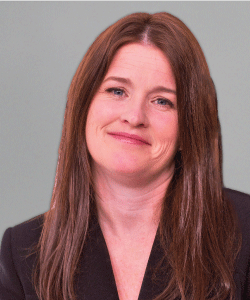Banishing Bullying With Science

Dorothy L. Espelage
From serving as a consultant to the National Anti-Bullying Campaign to her many appearances on national TV, APS Fellow Dorothy L. Espelage, a clinical psychologist at the University of Florida, is raising awareness about science-backed strategies for preventing bullying and youth violence.
What brought you to your current work on bullying and peer victimization among school-aged children?
As a graduate student at Indiana University in the early 1990s, I took a job as a research assistant for a Centers for Disease Control grant that was going to use the “the computer” to address youth violence. As the evaluator on this grant, I was charged with developing a survey evaluation tool and I stumbled upon the work of Dan Olweus in Norway, who was studying “whipping boys” — what others were calling bullying. After a solid review of the scholarship on peer aggression, I noticed that bullying was referred to as proactive or instrumental aggression. I asked the PI of the grant, Kris Bosworth, if I could create an aggression measure and the Indiana Teen Conflict Survey was the result. I then spent my first few years as an assistant professor at the University of Illinois, where I further developed and evaluated the University of Illinois Bully scale. From then on, my students and I developed comprehensive and rigorous studies to understand bullying in the US.
How does your background in clinical psychology inform your research?
My clinical training during graduate school was always scientifically-based — it was grounded in strong theoretical frameworks and included implementing evidence-based programs in mental health facilities (including state hospitals and community counseling centers) and school-based randomized clinical trials to curb youth violence. Through these experiences, I came to appreciate the science behind these interventions. To this day, I continue to approach my studies with the goal of producing the best science and disseminating in many outlets.
Has bullying shifted online? In what ways is cyberbullying different from in-person bullying?
Numerous cross-sectional and longitudinal studies show that involvement in face-to-face bullying, as a perpetrator or a victim, is strongly associated with involvement in bullying online. The two types of bullying share many risk factors (e.g., impulsivity, lack of parental supervision) and protective factors (e.g., parental communication, empathy); more work needs to be done to understand the unique factors across these two contexts. Our current work includes a meta-analysis funded by National Institute of Justice to demonstrate the efficacy of school-based prevention programs that target bullying across these two contexts.
What does your research say about the most effective interventions?
Meta-analyses indicate that even under ideal situations of good implementation, bullying prevention programs reduce bullying perpetration and victimization only by 17–23%. Bullying is a complex phenomenon that requires a complex solution — not the simple solutions that schools often implement, such as assemblies and poster campaigns. Effective bullying prevention programming includes strong policies and procedures, ongoing training for staff and educators, involvement of parents, skill training for youth, youth-driven interventions, and school climate improvement.
Where do you see this field of research going in the next 5 years?
We’re starting to see a new generation of prevention and intervention approaches that leverage technology. For example, my students, colleagues, and I have developed a text messaging program for middle school youth to teach them social emotional learning competencies and encourage bystander intervention. We’ve also developed and evaluated a virtual reality bullying prevention experience for middle school youth and demonstrated an increase in empathy in a small pilot. And we’ve developed a reporting app in collaboration with high school youth to increase communication between students and educators. We’ve also developed online professional development materials for school police to improve relations between students and police to promote reporting of safety concerns. I believe that we’ll continue to see the use of technology to improve the efficacy of bullying prevention programs.
You’ve served as a scientific adviser to governmental groups — what advice do you have for researchers who want to get more involved in bringing psychological science into public policy?
It’s important to first establish a strong program of research and disseminate your publications in various outlets beyond conferences. This means writing briefs, conducting webinars, and presenting to practitioners and policymakers outside of psychology. Also, find out who the consumers of your research are and find out if they engage in activities on the Hill, where they could use your research to support certain legislation and policy. Most professors don’t have time to write grants, manage grants, advise and teach, and then lobby on top of that. So, partner with agencies that value psychological science and work together to get the research findings into daily conversations about the public health issues that you study.





APS regularly opens certain online articles for discussion on our website. Effective February 2021, you must be a logged-in APS member to post comments. By posting a comment, you agree to our Community Guidelines and the display of your profile information, including your name and affiliation. Any opinions, findings, conclusions, or recommendations present in article comments are those of the writers and do not necessarily reflect the views of APS or the article’s author. For more information, please see our Community Guidelines.
Please login with your APS account to comment.